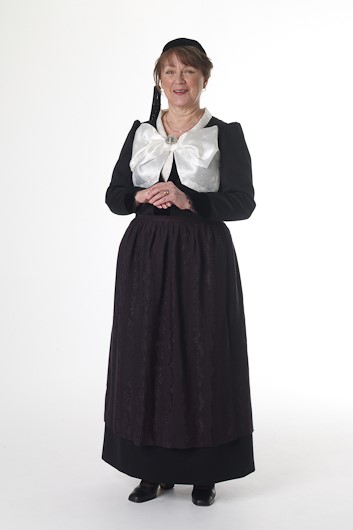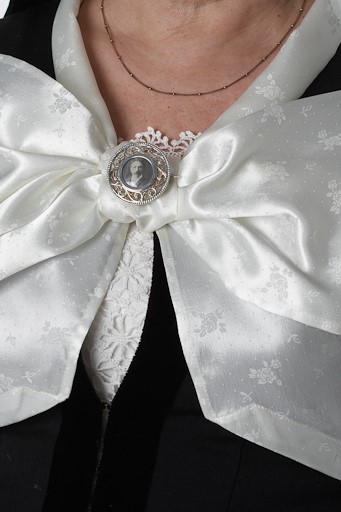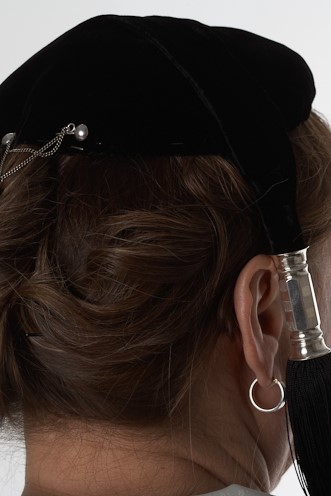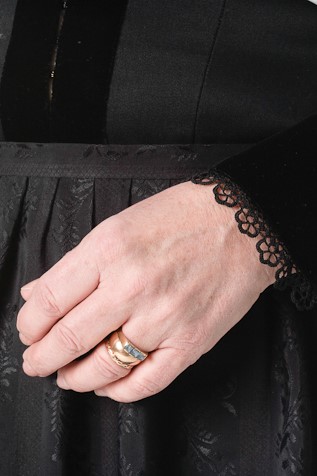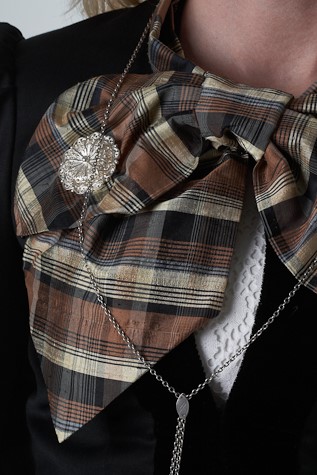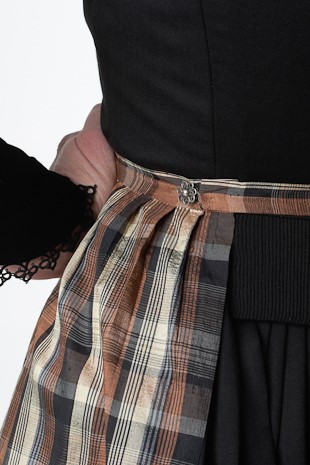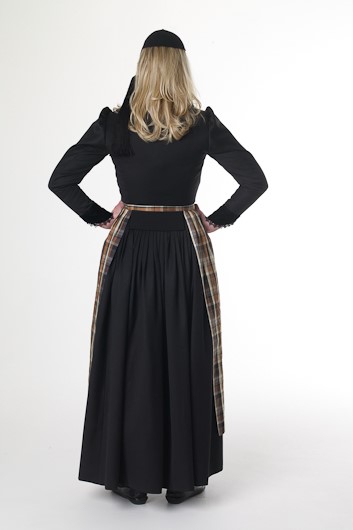20th century peysuföt
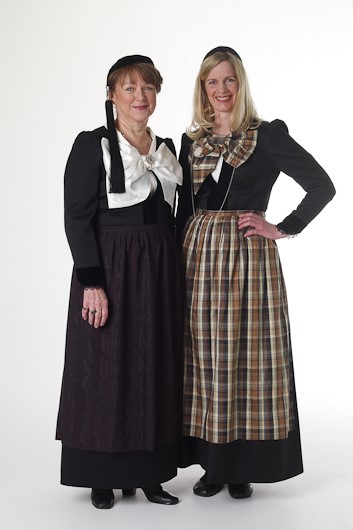 The peysuföt costume evolved with changing times, fashion trends and the availability of materials. The 20th-century peysuföt developed to become quite different from what had been worn in the previous century. The skirt and jacket were black, sewn of woollen cloth or silk damask or similar fabric. As before, the peysa was tightly-fitted with the stakkur (stokkur) at the back. The plackets and cuffs were trimmed with velvet, and the sleeves were slightly puffed at the shoulder. Under the front of the peysa there was a white peysubrjóst or stomacher – a piece of fabric trimmed with lace or embroidery , which was visible at the open front of the jacket. The slifsi or tie was a length of silk worn around the neck and tied in a bow. It was generally made of silk, plain or multicoloured, like the apron. The costume was worn with a shallow cap sewn of velvet with a long black silk tassel. In the mid-20th century the slifsi and apron were sometimes made of multicoloured synthetic fabric. Today the peysuföt costume is generally sewn of woollen fabric, with a silk slifsi. The apron is vertically-striped or chequered, and a shallow cap is knitted of fine woollen yarn. The peysuföt costume is worn with black stockings and shoes.
The peysuföt costume evolved with changing times, fashion trends and the availability of materials. The 20th-century peysuföt developed to become quite different from what had been worn in the previous century. The skirt and jacket were black, sewn of woollen cloth or silk damask or similar fabric. As before, the peysa was tightly-fitted with the stakkur (stokkur) at the back. The plackets and cuffs were trimmed with velvet, and the sleeves were slightly puffed at the shoulder. Under the front of the peysa there was a white peysubrjóst or stomacher – a piece of fabric trimmed with lace or embroidery , which was visible at the open front of the jacket. The slifsi or tie was a length of silk worn around the neck and tied in a bow. It was generally made of silk, plain or multicoloured, like the apron. The costume was worn with a shallow cap sewn of velvet with a long black silk tassel. In the mid-20th century the slifsi and apron were sometimes made of multicoloured synthetic fabric. Today the peysuföt costume is generally sewn of woollen fabric, with a silk slifsi. The apron is vertically-striped or chequered, and a shallow cap is knitted of fine woollen yarn. The peysuföt costume is worn with black stockings and shoes.


